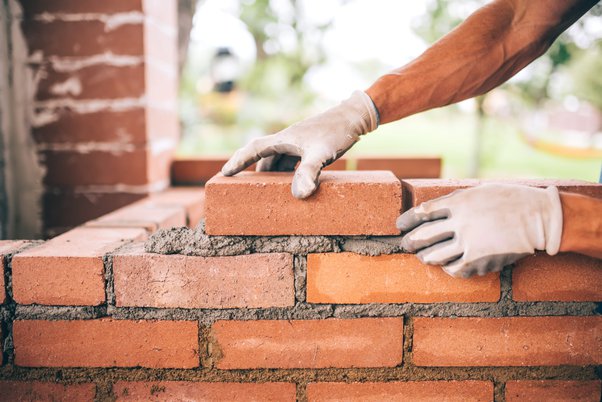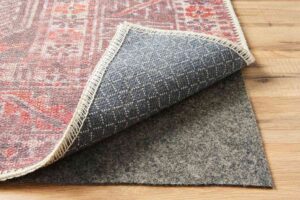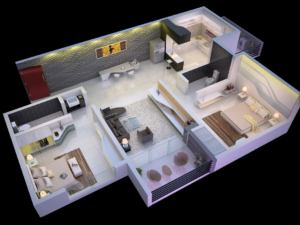
Decoding Construction: How Many Bricks Does It Take to Build a House?
Introduction
The construction of a house is a monumental undertaking, and one of the key components in this process is the use of bricks. Bricks have been a fundamental building material for centuries, known for their durability, versatility, and timeless appeal. If you’re embarking on a home-building journey, understanding how many bricks it takes to build a house is crucial. In this comprehensive guide, we’ll delve into the factors that influence brick quantity, provide estimations for various types of houses, and address common questions related to brick usage in construction.
1: Factors Influencing Brick Quantity
1.1 House Size and Design
The size and design of the house significantly impact the number of bricks required. Larger houses naturally demand more bricks, while intricate designs with curves, corners, and varied wall heights may increase the overall quantity needed.
1.2 Wall Thickness
The thickness of the walls plays a crucial role in determining the number of bricks. Standard residential walls are typically constructed with a thickness of 4 inches (single brick) or 8 inches (double brick). Thicker walls require more bricks to cover the same area.
1.3 Type of Brick
The type of brick chosen for construction also influences the quantity needed. Standard bricks come in various sizes, and certain specialty bricks, such as those with unique finishes or shapes, may affect the overall count.
1.4 Windows and Doors
The placement and size of windows and doors impact the amount of brickwork required. Larger openings reduce the wall area, decreasing the number of bricks needed. Conversely, smaller openings or additional features like arches may increase brick consumption.
2: Estimating Brick Quantities for Different House Types
2.1 Single-Story House
For a single-story house with standard 8-inch thick walls, the average estimate is around 5,000 to 7,000 bricks per 1,000 square feet. This estimate can vary based on the factors mentioned earlier.
2.2 Two-Story House
In a two-story house, the brick quantity increases due to the additional height. On average, it may require 7,000 to 10,000 bricks per 1,000 square feet.
2.3 Ranch Style House
Ranch-style houses, known for their sprawling single-story layouts, generally fall within the 5,000 to 7,000 bricks per 1,000 square feet range.
2.4 Colonial Style House
Colonial-style houses, characterized by their symmetrical design and often two-story structure, may require 7,000 to 10,000 bricks per 1,000 square feet.
FAQs on Brick Quantities for House Construction
1: How do I calculate the number of bricks needed for my house?
To calculate the number of bricks, multiply the total wall area by the number of bricks per square foot. Adjust for windows, doors, and other openings, and consider the type and thickness of the bricks.
2: Does the mortar between bricks affect the quantity estimation?
Yes, the mortar used for bricklaying is crucial. Mortar thickness contributes to the overall thickness of the wall, impacting the number of bricks needed. Factor in mortar thickness when estimating quantities.
3: Can I reduce costs by opting for thinner walls?
While thinner walls may require fewer bricks, it’s essential to balance structural integrity and cost savings. Consult with a structural engineer to determine the appropriate wall thickness based on your house design and local building codes.
4: Do different brick patterns affect the quantity needed?
Yes, intricate brick patterns or designs can influence the quantity of bricks needed. Patterns like herringbone or basket weave may require more bricks to cover a specific area compared to standard running bond patterns.
5: Are there ways to estimate brick quantities without professional help?
Several online brick calculators and estimation tools are available to help homeowners get a preliminary idea of the number of bricks needed. However, consulting with a professional is recommended for accuracy.
6: How does climate impact brick quantity?
In regions with extreme temperatures or weather conditions, thicker walls with additional insulation may be necessary. This can increase the overall quantity of bricks needed for construction.
7: Can I use reclaimed bricks to reduce costs?
Using reclaimed or recycled bricks is a sustainable option and may offer cost savings. However, careful inspection is crucial to ensure the quality and structural integrity of reclaimed bricks.
8: Do interior walls require the same brick thickness as exterior walls?
Interior walls typically have a smaller brick thickness than exterior walls, as they don’t need to withstand weather elements. Adjusting the thickness for interior walls can impact the overall brick quantity.
9: What role do building codes play in brick quantity?
Local building codes may dictate specific requirements for wall thickness and construction materials. Adhering to these codes is essential, and compliance can impact the quantity and type of bricks needed.
10: Can I mix different types of bricks in construction?
While it’s possible to mix different types of bricks for aesthetic purposes, it’s essential to maintain uniformity in terms of structural characteristics. Consult with a professional to ensure compatibility and structural integrity.
Conclusion
Determining how many bricks it takes to build a house involves considering various factors, from the size and design of the house to the type and thickness of the bricks. While estimations provide a baseline, it’s crucial to consult with professionals, such as architects or builders, to ensure accuracy and compliance with local building codes. With a thoughtful approach to quantity estimation and a clear understanding of construction requirements, you can embark on your home-building journey with confidence, knowing that each brick contributes to the foundation of your dream home.


